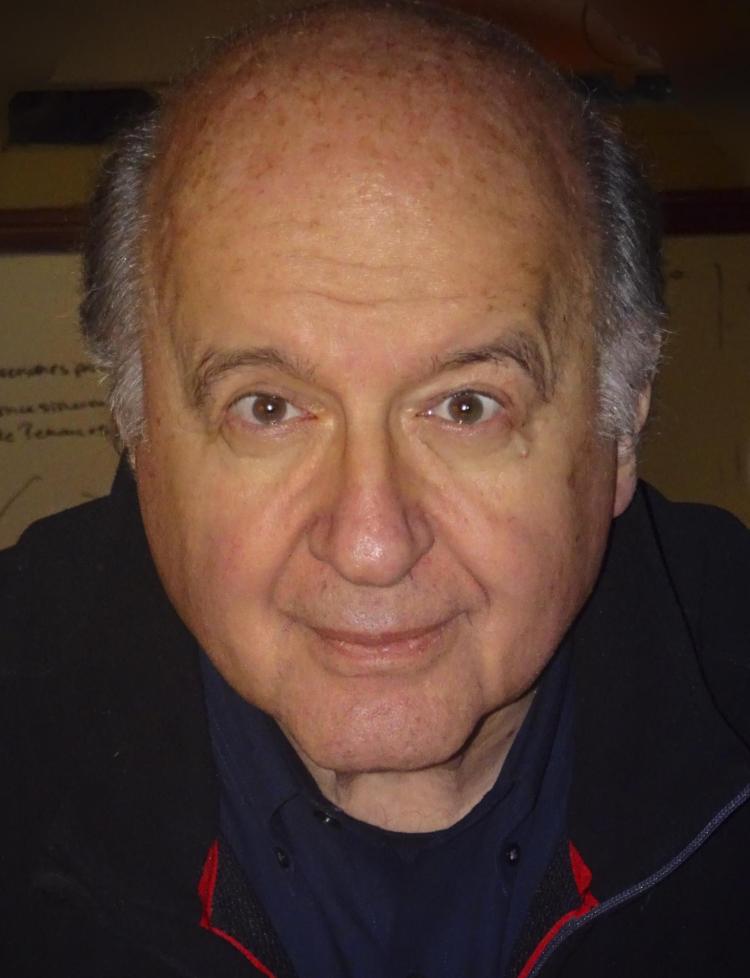World-renowned economist receives honorary degree
Peruvian economist Hernando de Soto will be awarded an honorary degree for outstanding achievement in intellectual contributions and public service from the University of Colorado Boulder on Tuesday, May 29. The degree recognizes his contributions to economics and public policy, which are credited with saving thousands of lives around the world.

Peruvian economist Hernando de Soto will accept an honorary degree from CU Boulder May 29 (Photo: Institute for Liberty and Democracy).
His ideas are a cornerstone of the Hernando de Soto Capital Markets Program at the Leeds School of Business. As a part of the program, de Soto’s writings are incorporated into an introductory course all Leeds students take. Students learn about Adam Smith and Karl Marx side-by-side, in addition to preconditions of economic development, such as the rule of law and property rights.
The Hernando de Soto initiative was founded in part by an endowment from CU Boulder alumni William and Jane Reynolds to explore the history and efficacy of different approaches to property rights across formal and informal global markets.
De Soto is noted for major reforms to Peru's economic system and contributing to the undermining of the Shining Path uprising in Peru. The conflict killed nearly 70,000 Peruvians in the 1980s and ‘90s. De Soto was one of the first to recognize that indigenous highland farmers were supporting the Shining Path, widely considered a terrorist group, because they could not obtain legal title to their land. The farmers, without control over their own economic wellbeing, became attracted to violent Maoist ideology. De Soto offered a different path by drawing up a strategy that convinced both the Peruvian government and the international community to empower the farmers by officially recognizing the local ledgers which represented the property rights of the farmers to the land and the assets they owned.
This was no small feat: the U.S. considered Peru’s Shining Path terrorists—along with Cambodia’s Khmer Rouge—as the 20th century’s fiercest subversive forces.
In his official memoir, Peru’s terrorist chief explained his defeat and why he spent 500 kilograms of dynamite trying to kill de Soto: “We have been displaced by a plan designed and implemented by de Soto and Yankee imperialism.” Peru was able to substitute the terrorist's gun with the rule of law.
It took De Soto about a year to make this case to the U.N. and the U.S. Finally, in 1991, after a five hour meeting at the White House, President George H.W. Bush said: “What you’re telling me is that these little guys are really on our side.” He got it.
This led to a treaty with the U.S. that made it uncontroversial to recognize "spontaneous ledgers" in the rural war torn areas and encouraged Peru’s armed forces and the farmers to form an armed alliance—four times the army’s previous size—which sent the terrorists fleeing. The war was won in short order.
De Soto’s work continued in developing and former Soviet nations around the world. The World Bank's flagship program "Doing Business" is based in his findings and formulas, as well as a leading interpretation of conflicts in the Middle east and North Africa where he demonstrates that Arab revolutions are very much about property rights.
In a nutshell, his thesis is that there are no more unknown territories on earth. We now have structured knowledge collected by surveyors, satellites and GPS, documented in maps and records, that tells us where every territory on earth begins and ends and where every visible asset—farms, mines, oil wells and buildings—is located. However, we still do not have globally structured knowledge about who really controls the territories and has enforceable property rights over assets where 5 billion people on earth live. No one even knows where the ledgers containing that information are located.
De Soto is currently involved in developing a methodology to create the world's first Property Rights Book and to make topsoil rights compatible with subsoil rights so as to unleash over $100 trillion-worth of proven and probable mineral reserves in less developed countries that are blocked. The reason: the rights that mining companies have been awarded to extract those minerals from the subsoil conflict with the rights to the topsoil that the miners must drill through–owned mostly by poor people.


